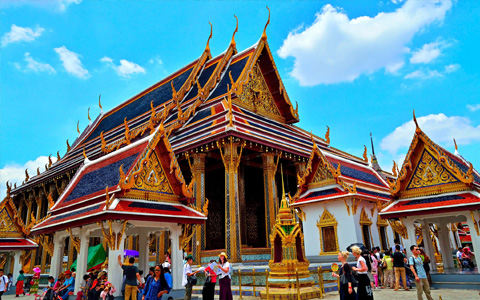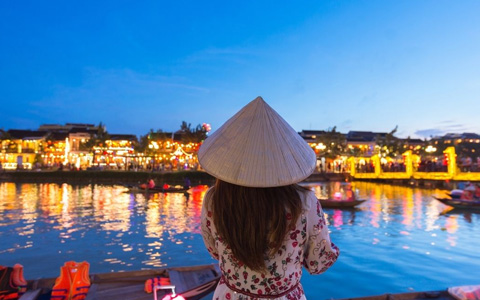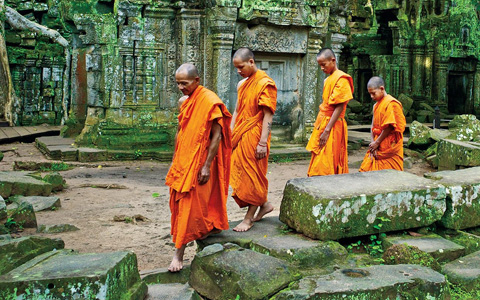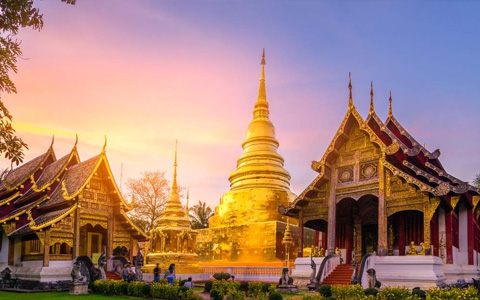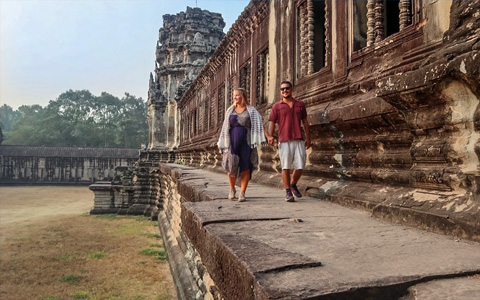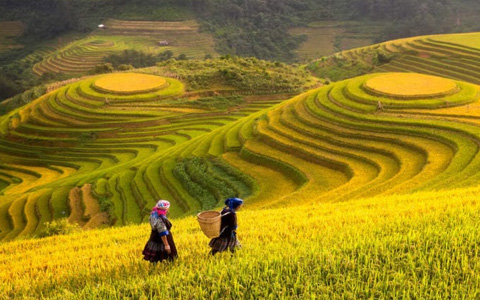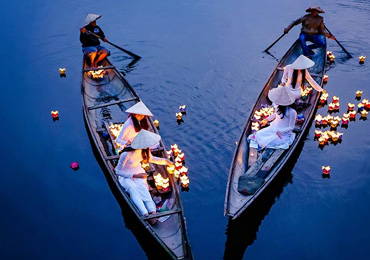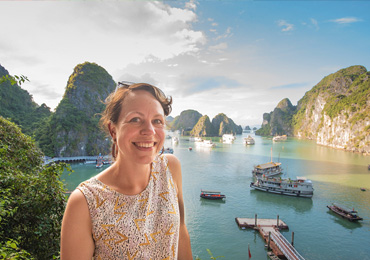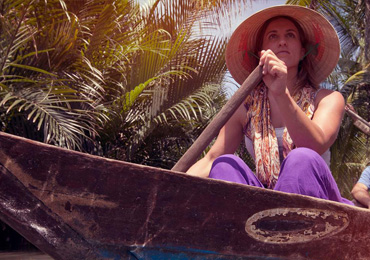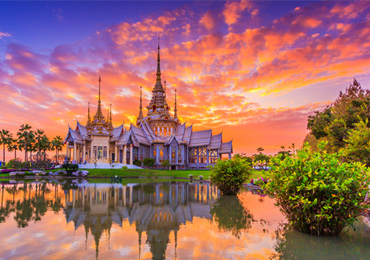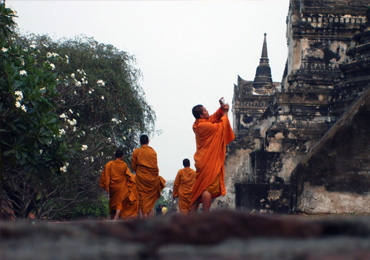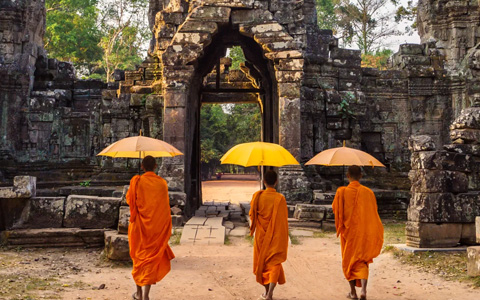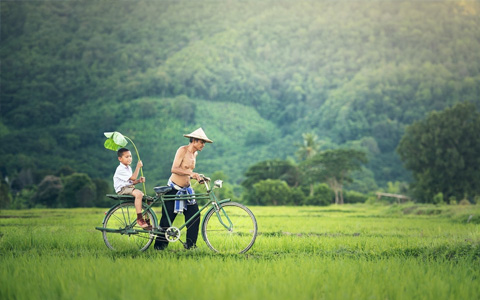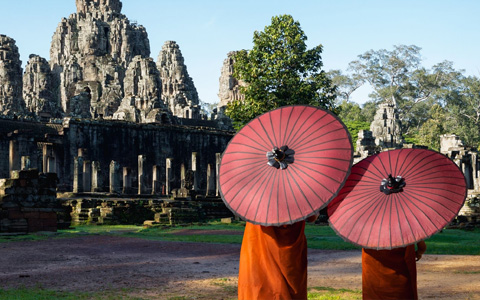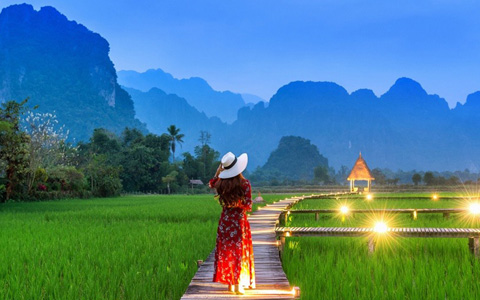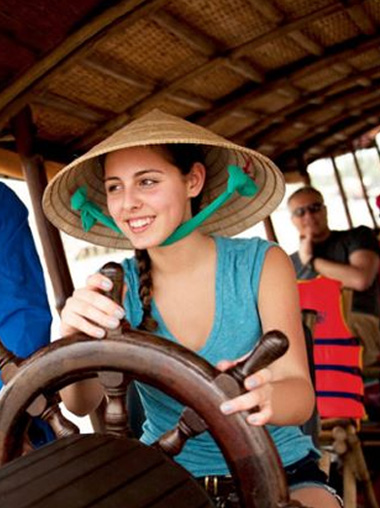1. What is the best time to visit Vietnam and Thailand together?
Vietnam is a country with multiple climates, changing from north to south depending on the time of year.
But so is Thailand, with a variety of climates from north to south, especially around the southern peninsula, so they make a great pairing for travelers.
Overall, the best time to visit Thailand and Vietnam is from January to May, when it is driest in both countries at some time during this period.
2. What are the COVID-19 travel restrictions for traveling to Vietnam and Thailand?
For Vietnam, the COVID-19 travel requirements are now minimal, and there is no longer any requirement for testing prior to travel.
As well as your visa for entry, travelers are required to download the “PC-Covid Viet Nam” Mobile app, which must be presented before entering any Vietnamese establishments, and ensure they have travel insurance that has COVID cover with a minimum coverage amount of US$10,000.
Similarly, Thailand has also relaxed its previous restrictions, with no further requirement for Thailand Pass registration.
Travelers are required to provide either evidence of being fully vaccinated, though boosters are not required, or they must show a negative test result completed within 72 hours of the date of travel for entry into Thailand. The COVID test result must be negative or non-reactive, and the document must state the name of the traveler, the date and time of the test, and the type of test completed.
3. Is it safe to travel to Thailand and Vietnam now?
Generally, both Vietnam and Thailand are relatively safe for foreign travelers, mainly due to low crime rates because they are devoutly Buddhist countries.
Thailand has a well-entrenched tourist industry, and it is easy to travel around the country, and relatively safe, even for women.
As Buddhists, the people are generally abhorrent to crime, though nowhere is 100% safe. There are instances of pickpocketing and petty crimes, and you will see plenty of scams running in Bangkok, which is a little more open and less conservative.
In Vietnam, there are a few instances of pickpocketing or opportunist crime, but this is relatively rare against tourists. Common sense and a secure waist bag for valuables can easily counter this possibility.
4. How many days do I need for a Thailand and Vietnam tour?
Covering two separate countries, the optimum period for a decent trip to Thailand and Vietnam together is around 14 days.
This gives you a week in each destination, allowing you plenty of time to get to see the major attractions and sights of both places, without having to rush around and possibly miss some of the more interesting aspects of each country.
5. How to travel from Thailand to Vietnam?
With Laos lying between the two destinations, it is best to take a flight to get to Vietnam from Thailand.
Flights run daily from Thailand’s major airports to the major airports in Vietnam and are relatively cheap. The majority of the flights run from Bangkok to either Saigon or Hanoi airports and can cost as little as just US$ 40 per person for a one-way economy flight.
6. What are the top things to do in Thailand and Vietnam?
In Thailand, there is a wealth of attractions to see, but you should make sure to experience the best of them.
The best things to see in Thailand include the Reclining Buddha at Wat Pho, the amazing canals known as “klongs” that criss-cross the capital city, the ancient Buddhist temples and bustling colorful markets of Chiang Mai in northern Thailand, the amazing Thai beaches, and a cruise along the Mekong River to the Golden Triangle.
There are also plenty of things to do and see in Vietnam. But you should not miss out on the best attractions, such as Hanoi’s Old Quarter, Hue’s ancient imperial city, Hoi An’s amazing street markets, and small coffee-culture cafes and street food, Saigon’s unique mixture of old and new, and the mighty Mekong Delta.
7. Are Thailand and Vietnam good destinations for family tours?
Thailand has been a major tourist destination for more than half a century and is an ideal place for families with kids.
Bangkok is a great experience for adults and kids alike and offers a huge variety of food, cultural experiences and activities, and options to travel around easily.
And with the kids in tow, you can always head off to the Siam Ocean World or the Bangkok Safari World for a fun day out.
For families that have a little spirit of adventure, Vietnam can be a rewarding experience.
Although it is more suited to families with kids older than 6 or 7, who can better explore the fascinating wealth of culture and history of this ancient empire, there are still plenty of activities to please kids of all ages, from beaches and boat trips to adventure treks and island hopping.
8. What to wear in Vietnam and Thailand?
The climates of Thailand and Vietnam do vary somewhat, but in general, they are both hot and humid destinations where you won’t really need sweaters and thick pants, except in the northern mountains of Vietnam in the winter.
In general, light clothing is best, something that can be layered as needed. And avoid showing skin, especially for women, so long shirts or pants, and long-sleeved tops with shoulders and midriff covered are essential.
That said, Bangkok is a little more relaxed and less conservative than the rest of Thailand, as long as there is not too much skin showing. Normal shorts and short-sleeved t-shirts are more acceptable here.
9. What are the Dos and Don’ts in Vietnam and Thailand?
In Vietnam, it is always required to dress appropriately, and it is advisable to remove the bling and watch out for pickpockets and thieves, as they do happen.
Always take off shoes when entering a temple or someone’s house, and always get permission to take people’s photos.
For don’ts in Vietnam, you should not show affection in public either, as it is frowned upon, and don’t let your feet point towards altars and religious icons when sitting or lying down.
Thailand has some similar dos and don’ts to consider, such as remembering to take off shoes when entering homes and temples, not pointing the feet, and dressing properly for the country.
You should also consider that you must always respect the monarchy, as even verbally insulting them is a crime.
Also, you should not point with one finger, as this is considered rude. If you want to gesture to something, use an open hand with all four fingers extended, with the thumb flat against the palm.
You should also refrain from putting your feet up on chairs or tables, and do not touch anyone’s head, especially the heads of monks and children.
And more than anything don’t lose your patience. Everything moves more slowly in Thailand and Vietnam, so relax and get used to taking your time and enjoying things at a slower pace.

 inquiry@myasiatours.com
inquiry@myasiatours.com
